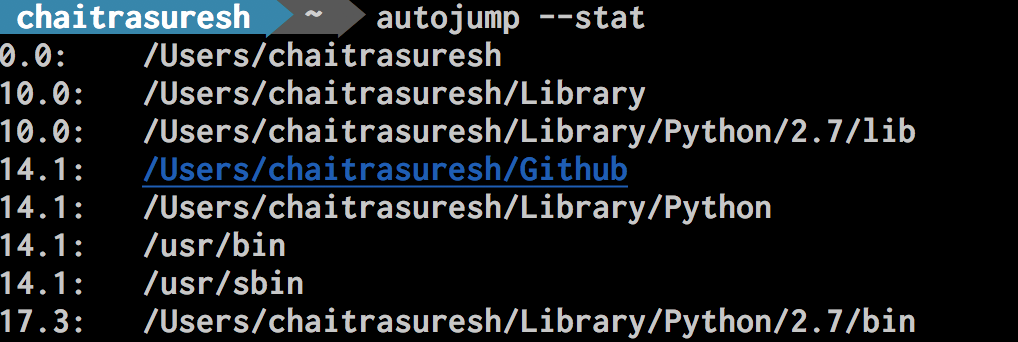I am writing about tools I use regularly use, to make my workflow efficient. My last post was about powerline. Today's post is about autojump that lets you navigate your filesystem with very few keystrokes.
autojump provides a very easy way to navigate your filesystem from within the comforts of your terminal app.
autojump maintains a database of all the directories you visit by assigning weights to each path. The most frequently used path has a higher weight .
On subsequent accesses to the same directory, you can do a j <destination directory name> without having to specify the entire path to your destination. j here is a wrapper over autojump that lets you forget that you need to cd to a directory ever.
I find myself using j a lot, especially in maven projects where the directory of your interest is buried deep in the hierarchy of src > main > java > ...
There is another cool feature of j that I use a lot. If you do a jo <directory name>, instead of jumping to the directory, your destination directory gets opened in the file explorer window like so:

There are other features that I seldom use but cool nevertheless. jco lets to navigate to a child directory the file explorer view and jc jumps to a child directory.
You can also purge non-existent paths with a autojump --purge. This is useful when you have deleted some heavily used directories and would like to clear up the autojump database. Personally, I would have liked the purge to happen when the directory gets deleted instead of putting the onus on me. Something like a LRU list comes to mind.
The weights are visible when you do a autojump --stat like so:

The autojump weights can be manually decreased or increased if you want to force autojump to go to a preferred path. I personally have never done this except perhaps when I was exploring the different options.
All said, autojump is a very useful utility to have in your terminal that will save you a lot of time. Here's how you can set it up:
- Install
autojumpwith brew:
brew install autojump
- Then source this script inside your
.bash_profile:
#Source Autojump
[[ -s $(brew --prefix)/etc/profile.d/autojump.sh ]] && . $(brew --prefix)/etc/profile.d/autojump.sh
That's how simple it is!